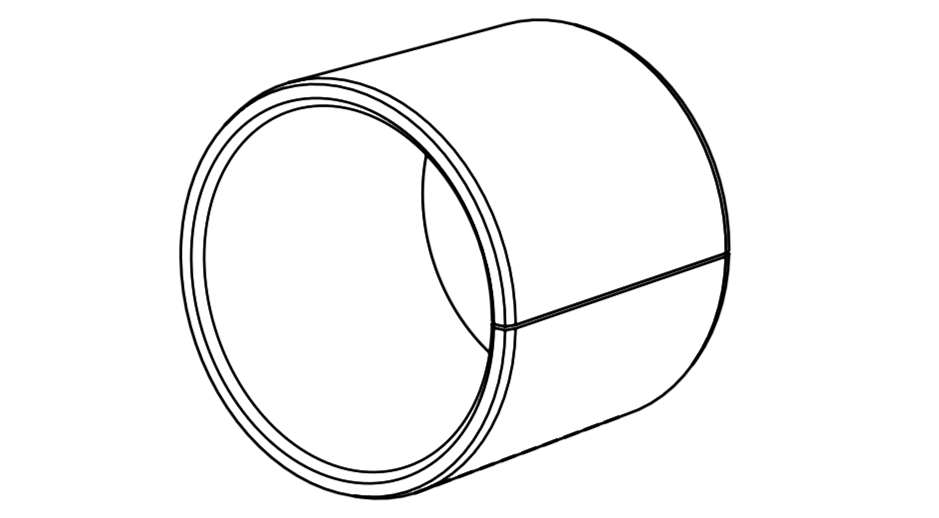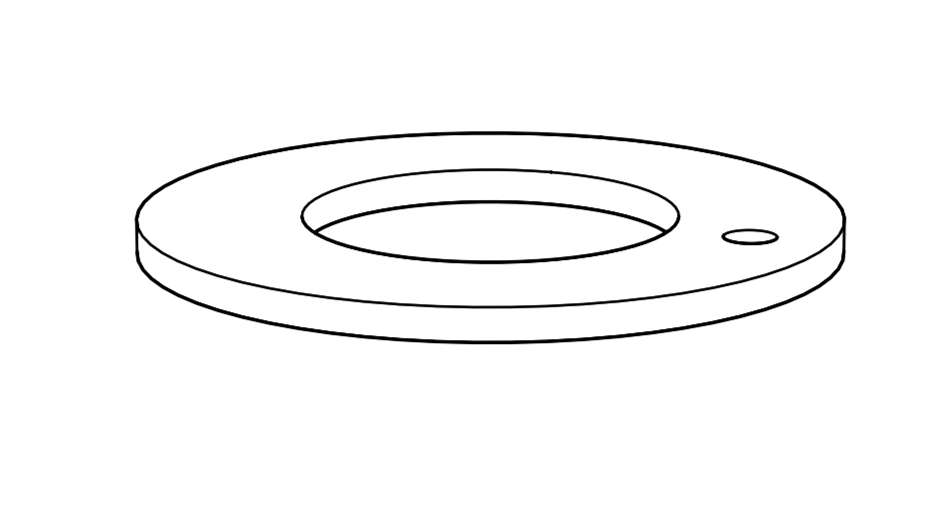GLYCO® 95
Key Features
- Usable under severely loaded fluid lubricated or greased conditions
- High pv-value
- Very high wear resistance
- Very high load capacity
- High thermal strength
- Rotating, oscillating and axial motion possible
Some particular greased or fluid lubricated applications need to be able to endure for long periods very high loads at elevated temperatures.
These operating conditions are reducing significantly the service life when standard materials are used, inducing a risk of material seizure before the application end of life.
GLYCO® 95 is a three layer composite material. A porous tin bronze sinter structure is applied on a steel back, which is impregnated with a PEEK sliding material with friction improving and wear reducing additives. An overlay of the same sliding material is located above the filled bronze structure.
Maximum sliding velocity of 2.5 m/s under greased operation. In oil lubricated applications, higher values up to 10 m/s or more depending on lubricant supply conditions are possible.
Microsection
Microsection GLYCO® 95 according to ISO 3547 type P2
| 1 | PEEK, PTFE, C fiber and Graphite |
| 2 | Tin bronze |
| 3 | Steel back |
| 4 | Tin layer (optional) |

Technical Data
| Properties | GLYCO® 95 |
|---|---|
| Material type | Thermoplastic based according to ISO 3547 type P2 |
| Composition | Steel back with sintered layer of tin bronze. Pore filling and cover layer (0.030 and 0.080 mm) of PEEK, PTFE, C-fibres + graphite with additives |
| Application | With initial lubrication for high wear resistance. Fluid lubricated like pumps, shock absorbers, EGR-valves. Industrial applications |
| Permissible stat. specific load | 250 MPa |
| Permissible dyn. specific load | 120 MPa |
| Maximum sliding velocity |
2.5 m/s (greased) 10 m/s (oiled) |
| Operating temperature | -150 to 250 °C |
| Coefficient of friction | 0.06 to 0.15 (greased) |
| Stick-slip | negligible |
| Wear layer thickness (min.) | 0,2 mm 0,0079 in |
| Lubrication
Friction Wear resistance Load capacity |
Grease
+ +++ +++
Oil
+ +++ +++ |
| Ability to support edge loads (resulting from misalignment) | good |
| Ability to embed dirt and foreign particles | standard |
| Ability to carry alternating loads | good |
| Ability to accommodate linear movement | good |
| Machining of sliding surface after mounting | calibration |
| Technical sheet |
Available Designs


All Materials of the
GLYCODUR® Portfolio
Catalog parts
- GLYCODUR® F
- Cylindrical bushings
- Flanged bushings
- Thrust Washers
- Strips
- GLYCODUR® A
- Cylindrical bushings
- Thrust Washers
- Strips